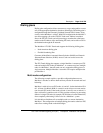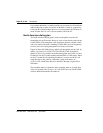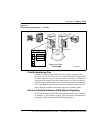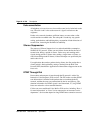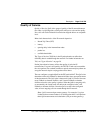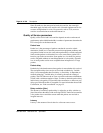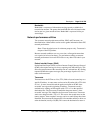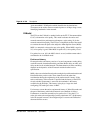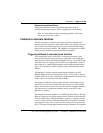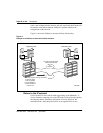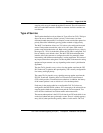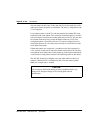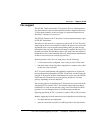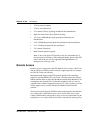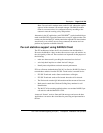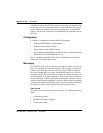
Description Page 57 of
378
ITG Trunk 2.0 ISDN Signaling Link (ISL) Description, Installation and Operation
Equipment Impairment Factor
Equipment Impairment factors are important parameters used for
transmission planning purposes. They are applicable for the E-Model.
Note: For information on QoS engineering guidelines, refer to the
Engineering Guidelines section.
Fallback to alternate facilities
The ITG continuously monitors and analyzes QoS data. When the ITG
detects IP network congestion, and the QoS is below a pre-defined value, new
calls routed to the remote IP gateway are rejected. Instead, the Meridian 1
routes them over non-IP facilities. The Stepback on Congestion over ISDN
feature provides Fallback to alternate facilities functionality.
Triggering Fallback to alternate trunk facilities
A key background activity of the ITG is to monitor the network’s QoS
between itself and each remote IP gateway configured in the dialing plan.
When the QoS is below the defined acceptable level for a given ITG Trunk
destination node, all outgoing calls from the near end Meridian 1 to the far
end Leader are re-routed through alternate circuit-switched trunk facilities.
That is, all calls that the switch is trying to setup; established calls cannot
fallback.
The Meridian 1 provides alternate routing based on BARS or NARS.
BARS/NARS translates the dialed location (LOC), NPA, NXX, or Special
Number (SPN) into an entry on the Route List Block (RLB) and searches the
trunks in the associated Route Data Block (RDB).
The trigger for Fallback to alternate trunk facilities is defined per call, per
customer. The local Active Leader makes the decision to use the Fallback
feature. The selection of routes is based on the customer-configured database.
The customer must configure the alternate routing to the PSTN in the
Meridian 1’s database.
The Fallback to alternate facilities uses an ISDN DCH mechanism. The Step
Back on Congestion over ISDN feature provides Fallback to alternate trunk
facilities functionality. When the Meridian 1 presents an outgoing call and
receives a release message back that indicates network problems, Stepback
on Congestion allows a new route to be found for the call (for instance, the
PSTN). The route selected depends on the customer’s database. If an alternate



